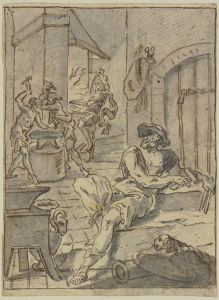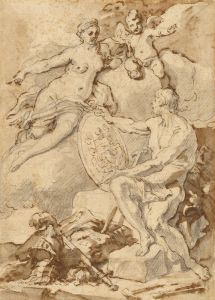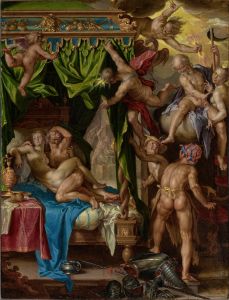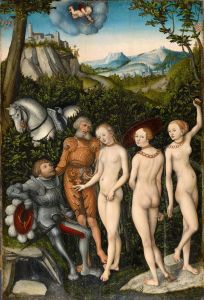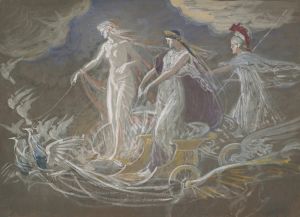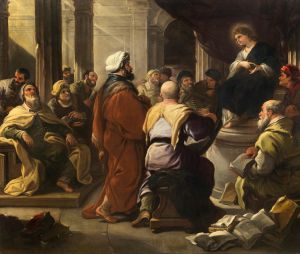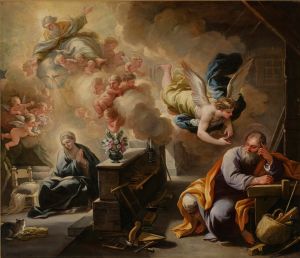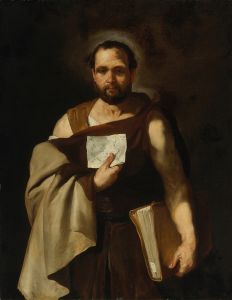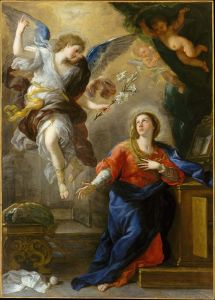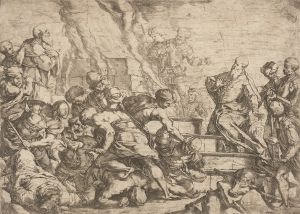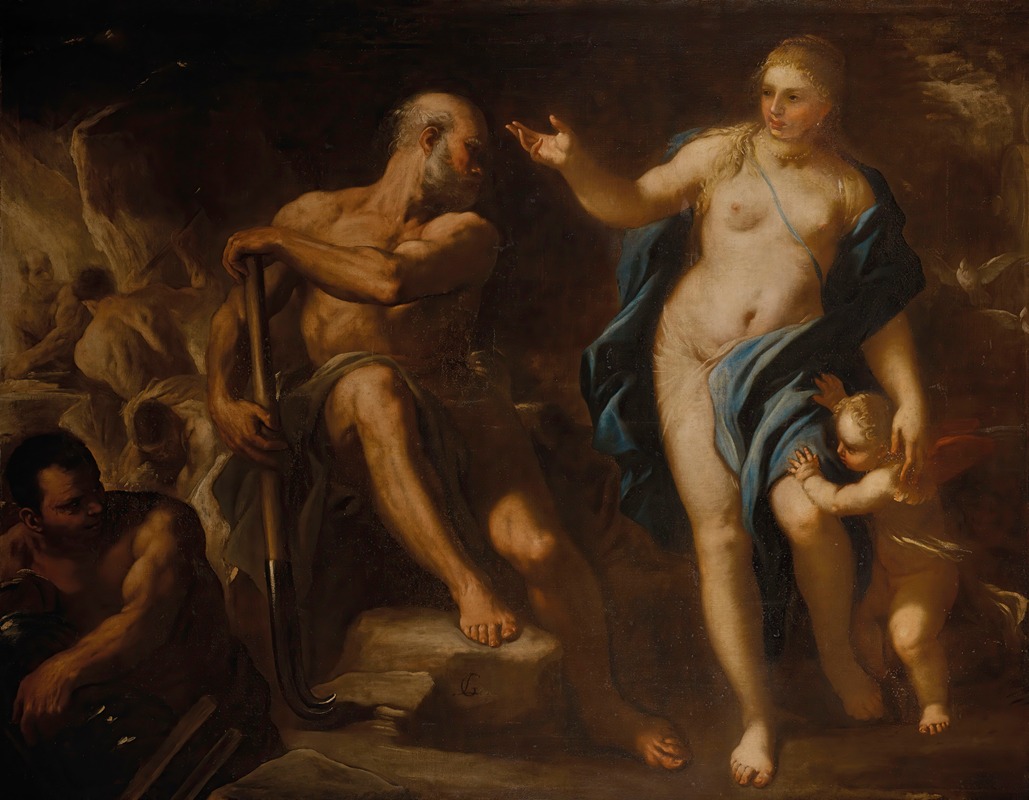
Venus in the Forge of Vulcan
A hand-painted replica of Luca Giordano’s masterpiece Venus in the Forge of Vulcan, meticulously crafted by professional artists to capture the true essence of the original. Each piece is created with museum-quality canvas and rare mineral pigments, carefully painted by experienced artists with delicate brushstrokes and rich, layered colors to perfectly recreate the texture of the original artwork. Unlike machine-printed reproductions, this hand-painted version brings the painting to life, infused with the artist’s emotions and skill in every stroke. Whether for personal collection or home decoration, it instantly elevates the artistic atmosphere of any space.
"Venus in the Forge of Vulcan" is a painting by the Italian Baroque artist Luca Giordano. Giordano, born in Naples in 1634, was a prolific painter known for his rapid execution and vibrant use of color. He was a prominent figure in the Baroque movement, which was characterized by dramatic expression, rich color, and intense light and shadow.
The painting depicts a scene from Roman mythology, featuring Venus, the goddess of love, and Vulcan, the god of fire and metalworking. In this mythological narrative, Venus visits Vulcan's forge to request armor for her son, Aeneas, a Trojan hero. The scene is set in Vulcan's workshop, where he is typically shown surrounded by his tools and the products of his labor.
Giordano's "Venus in the Forge of Vulcan" is notable for its dynamic composition and the interplay of light and shadow, which are hallmarks of the Baroque style. Venus is often depicted as a beautiful and graceful figure, contrasting with the rugged and muscular Vulcan. The painting captures the moment of interaction between the two deities, emphasizing the contrast between Venus's divine beauty and Vulcan's earthly craftsmanship.
The use of light in the painting is particularly striking. Giordano employs chiaroscuro, a technique that uses strong contrasts between light and dark to create a sense of volume and three-dimensionality. The light source in the painting appears to come from the forge itself, casting a warm glow on the figures and highlighting the textures of the metal and the softness of Venus's skin.
Luca Giordano was heavily influenced by the works of other Baroque masters, such as Peter Paul Rubens and Diego Velázquez. His ability to synthesize these influences while maintaining his unique style is evident in "Venus in the Forge of Vulcan." The painting showcases his skill in rendering complex compositions and his mastery of color and light.
Throughout his career, Giordano worked for various patrons, including the Spanish court, where he was invited by King Charles II. His time in Spain further enriched his style, blending Italian and Spanish artistic traditions. "Venus in the Forge of Vulcan" is a testament to Giordano's versatility and his ability to adapt his techniques to different themes and contexts.
The painting is housed in the Prado Museum in Madrid, Spain, which holds an extensive collection of Giordano's works. The Prado Museum is one of the most significant art museums in the world, renowned for its collection of European art from the 12th to the early 20th century. Giordano's works, including "Venus in the Forge of Vulcan," are an important part of the museum's Baroque collection.
In summary, "Venus in the Forge of Vulcan" by Luca Giordano is a quintessential example of Baroque art, showcasing the artist's skill in composition, use of light and shadow, and ability to convey mythological themes with dramatic intensity. The painting remains a significant piece within the Prado Museum's collection, reflecting Giordano's influence and legacy in the world of art.







